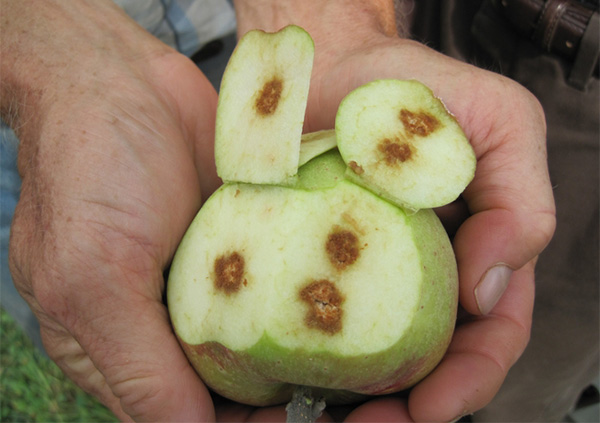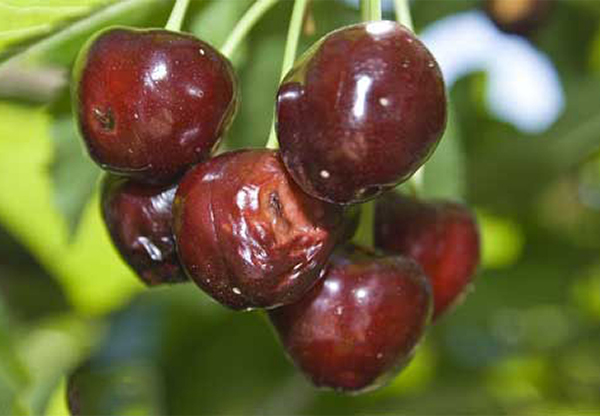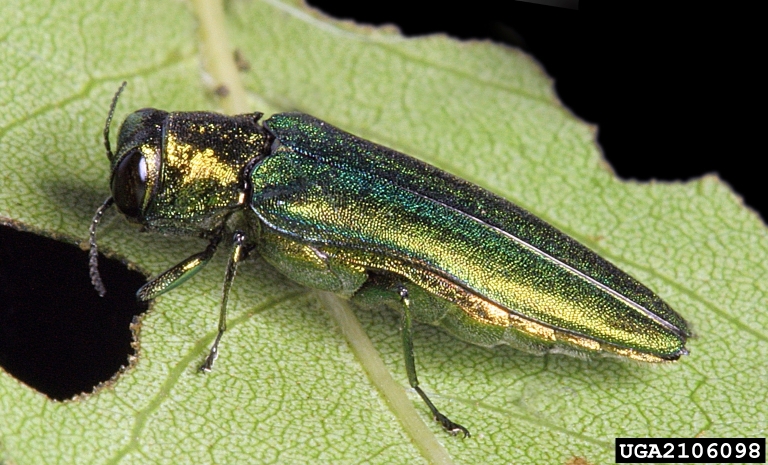Invasive Pests
Invasive Species
 Brown marmorated stink bug damage to apple (photo: Christopher Bergh, Virginia Tech)
Brown marmorated stink bug damage to apple (photo: Christopher Bergh, Virginia Tech)
 Spotted wing drosophila damage to cherries (photo: L.L. Strand).
Spotted wing drosophila damage to cherries (photo: L.L. Strand).
 Invasive pests often hitch a ride on infested firewood being transported by campers (photo: Rebekah D. Wallace, University of Georgia, bugwood.org).
Invasive pests often hitch a ride on infested firewood being transported by campers (photo: Rebekah D. Wallace, University of Georgia, bugwood.org).
 The emerald ash borer is spread primarily by moving infested firewood (photo: Pennsylvania Department of Conservation and Natural Resources, bugwood.org).
The emerald ash borer is spread primarily by moving infested firewood (photo: Pennsylvania Department of Conservation and Natural Resources, bugwood.org).
Invasive species are organisms that are not native to the local environment and are capable of harming the economy, environment, or human health. Not all non-native species are invasive. The term “invasive” is reserved for the most aggressive and destructive non-native species. Unfortunately, invasive species are a leading and growing threat to our nation’s agricultural and natural resources. Thousands of non-native (exotic) species have been introduced into the U.S., and the estimated damage and management costs of invasive species are estimated to exceed $138 billion per year.
How do invasive species spread?
- RVs and other Transportation Networks: Vehicles, especially those that sit for long periods of time, can harbor pests that then hitch a ride to uninfested areas.
- Passenger Baggage: Transporting animal or plant products back from domestic or international trips can move invasive pests to new locations.
- Outdoor Gear: Invasive species can be moved to new areas on hiking boots, clothes, and camping equipment.
- Wood Products: Movement of infested wood (firewood, shipping pallets, crates) has been implicated in the spread of several invasive pests.
- Plants and Plant Parts: Movement of infested plant materials (e.g., fruit) to uninfested areas can spread invasive species much farther than they would travel normally on their own.
- Wind and Storm Fronts: Weather systems can carry invasive pests along with them.
- Natural Dispersal: Some invasive species, such as strong flying insects, can easily disperse to new areas on their own.
What can you do to help prevent invasive species?
- Learn to Identify: Learn what invasive pests are in your area or in nearby states. Use the Featured Pests page and other resources to help identify troublesome pests.
- Report Sightings: Use the Report an Invasive Pest page to report suspected invasive pests.
- Look for Signs: It only takes a few minutes to check plants, containers, and personal belongings for infestations and invasive hitchhikers!
- Buy Local: Avoid transporting and shipping plant material or animals outside their area of origin. Buy local produce to avoid spreading invasive pests. Similarly, buy firewood where you plan to burn it. Visit the Don’t Move Firewood site to learn more about the dangers of moving firewood.
- Keep it Clean: Remove plants, soil, and animals from your personal belongings and pets when you travel.
- Spread the Word: Tell your family and friends about invasive pests and the economic and environmental dangers that are associated with them.
- Learn to Manage: Learn what is being done to manage an invasive pest if it is already present in your region.
- Cooperate with Quarantines: Observe agricultural restrictions and assist local authorities in combating invasive pests.
Also on this site
This website is growing all the time. Check out our Educational Materials page for invasive pest outreach materials. Finally, please also be sure to visit our Get Involved page for information about Utah’s First Detector Program.

